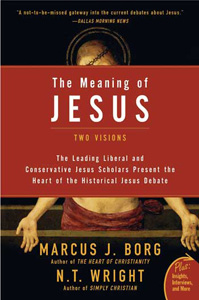
Boston University theology student Andrew Linscott has produced a useful resource for church school teachers, bible study groups, or pastoral discipleship leaders. “Interpreting the Bible between the Extremes: A Resource for Intentionally Moderate Churches,” is a study guide for intentionally moderate Christians. Written to offer a moderate balance between the right’s literalistic approach and the left’s neglect of the scriptures, this guide encourages rethinking our approaches to the Bible.
Each of the four sections of the guide includes analysis of historical and theological difficulties that arise in interpreting the Bible, and questions to guide group discussion. There are also two intriguing and realistic case studies to stimulate thought in a practical way about the meaning of the Bible for Christians. Linscott’s study promotes interactivity and dialogue, which are invaluable virtues for group leaders.
Overall, Linscott wants to encourage taking the “Bible more seriously.” However, the burden of the study is to show that this requires Christians to think critically. Linscott also notes the importance of interpretive methods. The historical-critical method is one that can either be a wonderful tool or an end in itself. To avoid the distortions that can arise in the latter case, Linscott suggests that “the critical approach must ultimately give way to a positive approach which affirms meaning.”
The moderate approach encouraged Linscott seeks to avoid these dangers. Towards this goal he says: “We must love the Bible for what it is, not what we have been taught that it is, or what we would like it to be.” In this way we can avoid the idolatry of focusing on the Bible instead of focusing on God.
Linscott closes with an accessible discussion of hermeneutics, which he describes as “a fancy word for interpretation.” The fact that every reading of the Bible is an interpretation leads to the difficulty of exposing the tacit assumptions involved in reading and interpreting the Bible. Though interpretation is inevitably “subjective, perspectival, and provisional,” there are better and worse interpretations possible. Resisting a “license for relativism” and propagating a humble recognition of the “finite, situated nature of human inquiry,” Linscott warns against absolutizing interpretations (“especially our own”).
Linscott’s study presents a balanced moderate position that can appeal to both conservatives and liberals.
Hopefully by now we have shown the ways in which extreme conservative and liberal approaches to the Bible are undesirable. As we have seen, both sides could stand to learn from what the other side practices best. Conservatives are great at affirming the meaningfulness of Scripture, but in danger when it comes to critique. Liberals pride themselves on their critical approach to all things theological, but often struggle when it comes to affirming Scripture, particularly in regards to its meaningfulness for today.
Becoming a member of LiberalEvangelical.org is free to all. Join the community today, and take advantage of this practical resource in your church home. When you log in, you will find the study guide under the Resources Menu.




